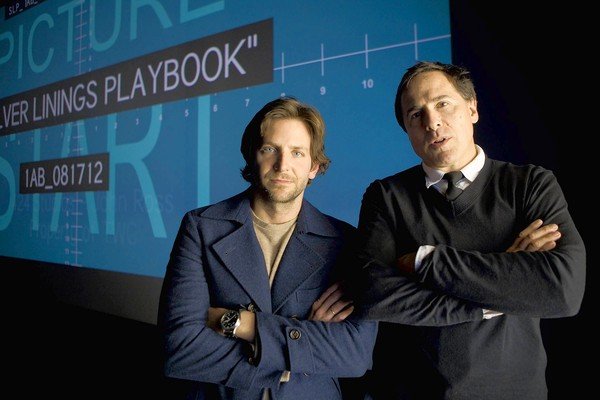|
A rooftop jump-off point for 'Silver Linings Playbook'
Posted on: 12/19/12
David O. Russell and Bradley Cooper collaborated in a way that was part free fall, part immersion. The first time David O. Russell phoned Bradley Cooper, it was midafternoon on a fall day a few years ago, and the topic, ostensibly at least, was Cooper's possible involvement in either the adaptation of the horror-lit mash-up "Pride and Prejudice and Zombies" or a couple of other movies Russell had recently written. The connection was spotty, so the actor climbed out onto the roof of his house to keep the conversation going. By the time they said goodbye, the sun had nearly set. Cooper and Russell didn't end up collaborating on any of those projects, but their lengthy exchange that day and subsequent meetings led to Cooper eventually winning the role of Pat Solitano, the bipolar protagonist in Russell's chaotic comedy "Silver Linings Playbook." It was a part originally intended for Mark Wahlberg in a movie that had initially been scheduled to shoot before "The Fighter," the 2010 Wahlberg-headlined drama that marked Russell's comeback as a filmmaker adept at making entertaining, off-center movies that connect with both critics and audiences. "We spoke a lot while he was casting the movie, and by that time we'd really hit it off," Cooper says. "But it was never about me being in it. Even at this point, I never thought it'd be in my landscape to be in a David O. Russell movie. But I will tell you that the whole reason I took out a loan from the government to go to grad school and then move to L.A. to be on a TV show was all to be here at a table with this man. That was the goal." Russell's talent as a filmmaker can be seen with a simple glance at his résumé — "The Fighter," "Three Kings," "Flirting With Disaster." He also has a realknack for casting well-known actors in roles that go against type. In "Silver Linings," audiences discover that Jennifer Lawrence, playing a force-of-nature neighbor opposite Cooper, has a dazzling flair for screwball comedy. It's also quickly apparent that Cooper, moving between Pat's volatility and vulnerability, possesses a range unimagined from watching him in the "Hangover" movies. "Pat's hunger and determination to reintroduce himself were matched perfectly by Bradley's determination as a performer who hadn't shown many of his dimensions," Russell says. "Bradley was really desperate to be seen as not just another pretty face." Cooper seems mostly content to let this assertation alone, despite Russell's prodding otherwise. "As an actor, you want to feel like you have a partner," Cooper says, looking at Russell. "Someone who wants you to jump on your own, but they're also falling with you. You can't be coddled, but you want to feel safe enough to jump. And that's what he provides." When thinking about their collaboration, the image that comes to Cooper's minds is "two heads coming together humming." The two went over every line in the script together, revision upon revision, finding the character and devising a third-act arc that departs significantly from the source material, Matthew Quick's 2008 novel. In the end, Cooper says, Pat became a way to investigate a part of himself, delving into feelings of anger and emptiness that he hadn't fully explored.Cooper's mother, Gloria, who was often on the Philadelphia set during filming, found his transformation convincing, though he wasn't quite sure if he wanted to accept her praise. "She said, 'Bradley, it's like you're not acting,'" Cooper remembers. "And I'm saying, 'What do you mean I'm not acting? Mom, this guy's bipolar!" Cooper laughs. "It was really funny because she was so dead-serious. But she wasn't wrong. I had reached a point where it was just happening. But, yeah, couldn't it have been like Face (the action hero Cooper played in "The A-Team")? Isn't that who I really am? It's Pat Solitano? Really? OK. I guess I'm cool with that, Mom." COMMENTS
Be the first to post a comment! Post A Comment:

|
.gif)



.jpg)

